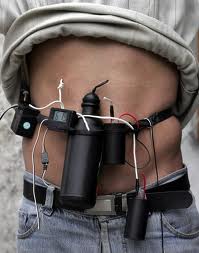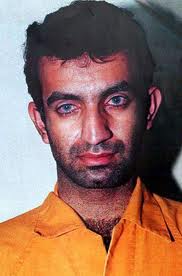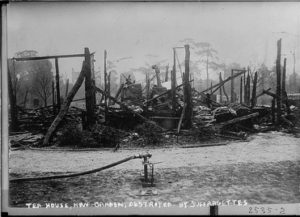Cross post here, on IMSL Insights : http://intelmsl.com/blog/2012/04/intelligence-analysts-are-irrational/

Cross post here, on IMSL Insights : http://intelmsl.com/blog/2012/04/intelligence-analysts-are-irrational/

I’m returning now to the issue of the psychology of EOD operators once again. This interesting paper published last year discusses “The Rubicon Theory of War” and is well worth a read. Its focus is more on the strategic issues of war-making and the psychology of politicians, generals and the public. The theory suggests that people are cautious and avoid war when it appears a long way off, but as war gets closer their estimates about the succeses which they will encounter in the war and its likely result improves, probably way beyond rational expectation.
I’m wondering if there exists , sometimes, a more individual, tactical effect on the psychology of individuals in battle, and specifically within the mind of an EOD operator on a planned operation, i.e. one where there is time and planning activity to carry out in advance. Does innate caution change as H-hour get closer? Is this simply a natural effect of knowing you have thought of everything and your planning is good? Or is it simply a psychologically based falsehood?. I suspect it is both and difficult to tell the two apart. I certainly recall operators who were a little perturbed at the beginning of planning an operation and who were much more confident even if I thought their plan was less than perfect. Also, intriguingly I never remember feeling too much concern on those planned ops I did myself. But I am now old and addled of mind and it was a long time ago.
Now, there’s an issue here to dig into. As a commander I wanted my operators to be confident. I didn’t want to see over-cautious, unsure, tentative operations. There’s nothing worse for the units the EOD team is supporting than to see their EOD operator being unsure and lacking confidence. On more than one occasion I had to sit down with unit commanding officers and either move an operator or try and protect him from a commander who thought he wasn’t on top of things. But at the same time I wanted that confidence to be justified, and I wanted an operator to put up his hand and say “Hang on, its not as straight forward as that,”when it came to pushy commanders asking too much. Once I was even banned from a brigade area (only for a couple of hours!) by a 1 star who thought I was not supporting his aims and as he called it (wrongly) spreading alarm and despondency amongst senior policemen over a specific operation. It took a few phone calls to close that one out , I can tell you.
The Rubicon Theory suggests there are two mind sets – firstly “deliberative” which dominates during the pre-decisional phase. It’s cautious and tentative and should prompt detailed planning when various courses of action are considered and compared. This switches to “implemental” once decisions are made. That’s fine too, but the danger to EOD operators is that the implemental mind-set is liable to override new information as it comes in and tends to assume that planned EOD actions will be successful. I see almost a parallel here with earlier blogs comparing the “thought-through” approach with the “instinctive” approach, that matches the constructed complex render safe procedures developed for a planned op with the SOP, rapid deployment “drills and skills” approach sometimes needed on higher tempo operations. As ever, the difficulty is separating the two, and knowing when to use one or the other. If we have SOPs that we automatically use in certain scenarios, by God we should be confident in them.
The authors of the paper describe something interesting. People in “implemental” mind sets are much less open and receptive to new information that perhaps they should pay attention to. Instead (and this is important) they seek information that supports the choice they have already made. I think that’s something that every EOD operator (and intell analyst) should avoid doing, whatever the scenario. Looking back, frankly, it’s a failure I myself was guilty of on certain operations and I can now recall seeing it on others, although I was probably too dumb to see it as such, back then. 20/20 hindsight can be a sickening thing. Implemental mind sets are over optimistic, and although EOD operations must activate implemental activity at some stage we need to guard against the weaknesses it generates. I suspect the key once again , is to recognise when a planned EOD action hasn’t done what you expected and be able to re-think from there. I sense that’s where things can go wrong if not grasped or recognized at that stage, but I won’t give examples for offending the living!
Suffice to say that this paper is a good read for EOD operators – take out the strategic war fighting examples the paper uses and insert your own tactical EOD experiences. It’s startling stuff.
Today’s incidents in Bangkok have all the hallmarks of a bit of a disaster for the “terrorist” gang concerned. However this is not the first terrorist plot to go horribly wrong in Bangkok,. Back in March 1994 Ramzi Yousef is believed to have been involved in an attempted vehicle bomb attack on the Israeli embassy there. He and his accomplices rented a truck, (strangling the delivery driver and leaving his dead body in the back of the truck) loaded it with a ton of explosives and then the designated suicide bomber set off for the target driving the truck with the bomb and the dead body in the back. On the way to the target, the klutz of a terrorist got involved in a road traffic incident, crashing into a taxi bike and a car at a busy intersection. The terrorist driving the VBIED panicked … and ran off abandoning the vehicle, bomb and body included.

Police responded to the scene of the traffic accident, and without checking the back, took the vehicle to the police vehicle pound… A week later the vehicle owner called to try and locate his truck … and was led to a very smelly truck in the vehicle pound where the police discovered the putrefying remains of the delivery boy, and a one ton bomb ready to go off at the flick of a switch. By then Ramzi Yousef and disappeared but he did leave his fingerprints on the bomb. Yousef, the man behind the first World Trade Center bomb in New York is often described as a terrorist mastermind and genius, but the facts of some of his exploits don’t bear that out. He nearly blew his hand off in an incident in Pakistan when a device functioned and set fire to his bomb making facility accidentally in Manila while planning Operation Bojinka.
Two IEDs in the last 24 hours, one detonating in India and one rendered safe in Georgia, both allegedly linked to Iran or possibly Hezbollah. In both cases the targets appear to be Israeli diplomatic officials and their families. A colleague over at IMSL Insight discussing possible plots in Azerbaijan in a post a couple of days ago points out that the knee-jerk response of blaming Hezbollah, even on the anniversary of the assasination of Imad Mugniyeh, may be incorrect and suggesting the plot in Azerbaijan was directly the work of the Iranian regime.
The Georgian attack sounds as if it was simply a grenade fastened to the underside of the diplomats vehicle with, at a guess, a simple string to a wheel to pull the pin or the grenade from an enclosure. The Indian attack could very well be the same sort of incident, looking at the damage to the car. (But note I haven’t yet the details to confirm this assessment). Both seem a little amateur for either Hezbollah or Iran.
Last month Gen. Masoud Jazayeri, the spokesman for Iran’s Joint Armed Forces Staff, was quoted by the semiofficial ISNA news agency last month as saying that Tehran was “reviewing the punishment” of “behind-the-scene elements” involved in the assassinations in Iran in the last few months, so a motive – retaliation- is clearly present.
Note that the vehicle attacked in India was bearing “diplomatic” plates.
The public perception of the suffragette movement, some 100 years ago, tends to see it as somewhat non-violent, all “handcuffing to the railings” and ladies throwing themselves in front of horses. But a deeper dive into history shows that the suffragettes made use of IEDs between 1912 and 1914. Perhaps my wife who regards my blog with disdain as being “boring and irrelevant” : -) will appreciate these stories.
A small number of the IEDs contained dynamite rather than gunpowder. Here’s a selection of a the few dozen or so that I have found records of:
The suffragettes also used letter bombs (and acid devices) posted to intended victims, as well as a significant series of straightforward arson attacks.

Update there’s a later post containing a more comprehensive list of suffragette explosive devices.